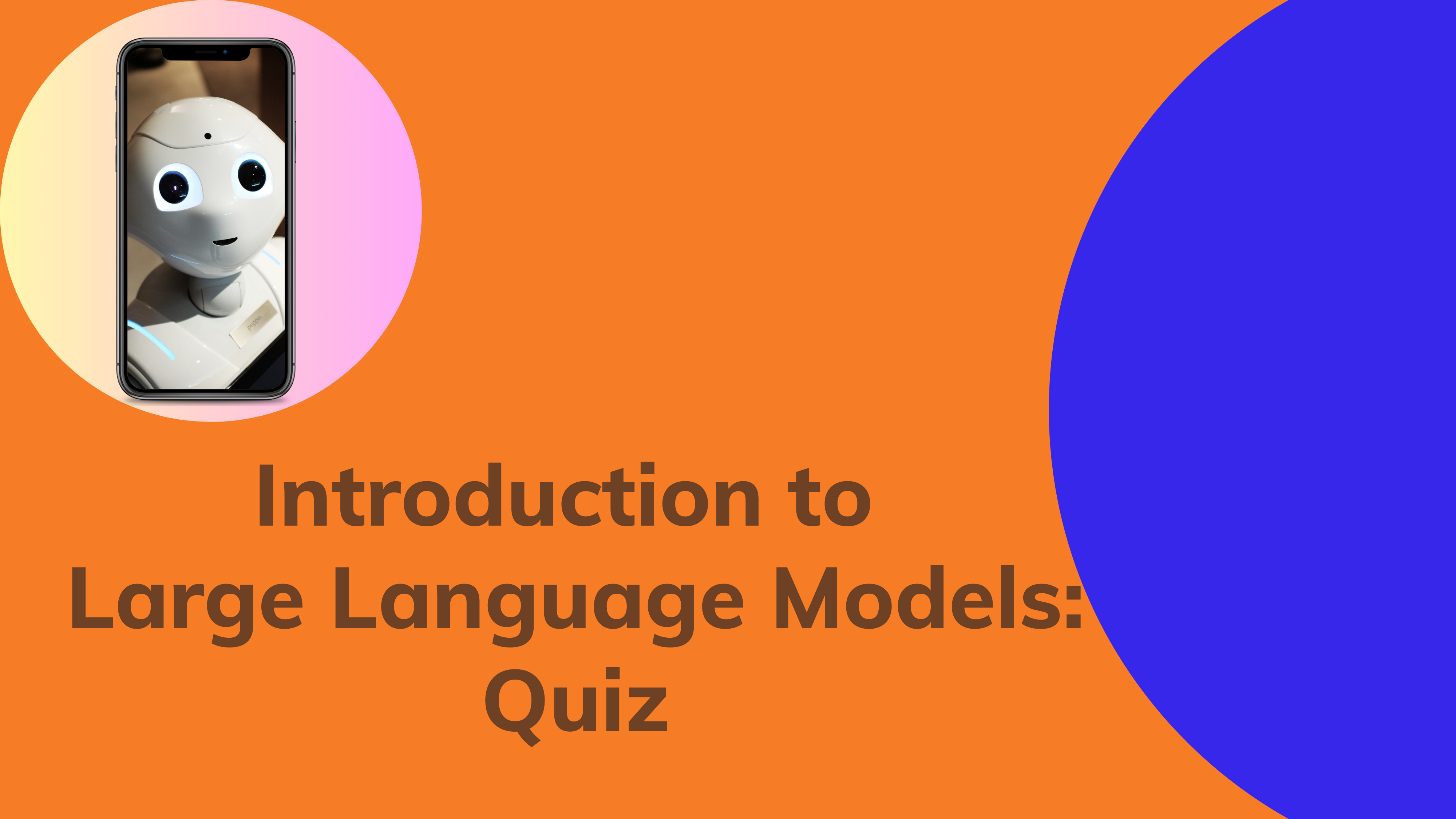Introduction to Large Language Models: Quiz
What are Large Language Models?
Large Language Models (LLMs) (for details Google LLM ) are advanced artificial intelligence (AI) algorithms designed to understand and generate human language. These models have gained widespread attention and significance in the field of Natural Language Processing (NLP) due to their exceptional capacity to process and manipulate text data.
In simpler terms, LLMs are like digital brains that can read, comprehend, and generate human language in ways that were previously thought to be achievable only by humans. They can analyze context, understand sentiment, translate languages, answer questions, generate creative content, and much more. These models have found applications in various domains, including chatbots for customer service, translation services, content generation, search engines, healthcare, and education, to name just a few.
1. What are some of the benefits of using large language models (LLMs)?
- They can generate non-probabilities and human-quality text.
- They can be used for many tasks, such as text summarization and code generation.
- They can be trained on massive datasets of text, image, and code.
- They are constantly improving.
- They can generate human-quality text.
- They can be used for many tasks, such as text summarization and code generation.
- They can be trained on massive datasets of text, images, and code.
- They are constantly improving.
- They can generate probabilities and human-quality text.
- They can be used for many tasks, such as text summarization and code generation.
- They can be trained on massive datasets of text and code.
- They are constantly being improved.
D. LLMs have many benefits, including:
- They can generate human-quality text.
- They can be used for a variety of tasks.
- They can be trained on massive datasets of text and code.
- They are constantly improved.
- They can generate discrete classes and human-quality text.
- They can be used for many tasks, such as text summarization and code generation.
- They can be trained on massive datasets of text and code.
- They are constantly improving.
2. What are some of the challenges of using LLMs? Select three options.
A. They can be used to generate harmful content.
B. They can be expensive to train.
C. After being developed, they only change when they are fed new data.
D. They can be biased.
3. What are large language models (LLMs)?
A. Generative AI is a type of artificial intelligence (AI) that can create new content, such as discrete numbers, classes, and probabilities. It does this by learning from existing data and then using that knowledge to generate new and unique outputs.
B. Generative AI is a type of artificial intelligence (AI) that only can create new content, such as text, images, audio, and video by learning from new data and then using that knowledge to predict a classification output.
C. An LLM is a type of artificial intelligence (AI) that can generate human-quality text. LLMs are trained on massive datasets of text and code, and they can be used for many tasks, such as writing, translating, and coding.
D. Generative AI is a type of artificial intelligence (AI) that only can create new content, such as text, images, audio, and video by learning from new data and then using that knowledge to predict a discrete, supervised learning output.
4. What are some of the applications of LLMs?
A. LLMs can be used for many tasks, including:
- Writing
- Translating
- Coding
- Answering questions
- Summarizing text
- Generating non-creative discrete probabilities, classes, and predictions.
B. LLMs can be used for many tasks, including:
- Writing
- Translating
- Coding
- Answering questions
- Summarizing text
- Generating non-creative discrete classes
C, LLMs can be used for many tasks, including:
- Writing
- Translating
- Coding
- Answering questions
- Summarizing text
- Generating non-creative discrete probabilities
D. LLMs can be used for many tasks, including:
- Writing
- Translating
- Coding
- Answering questions
- Summarizing text
- Generating non-creative discrete predictions
E. LLMs can be used for many tasks, including:
- Writing
- Translating
- Coding
- Answering questions
- Summarizing text
- Generating creative content
Answers:
1: D, 2: A,B,D, 3: C,4: E
